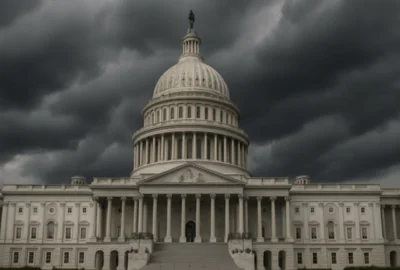WASHINGTON -- FEMA continues working with federal, state, local, tribal and non-governmental partners to support the needs of areas affected by Ida. As parts of the south begin their clean-up efforts, the storm continues tracking inland, bringing considerable heavy rain and flooding threats from the Tennessee and Ohio valleys into the central and southern Appalachians and mid-Atlantic through Wednesday.
Individuals who experienced damage and power loss should use extreme caution during the recovery phase. Areas inland will continue to experience dangerous weather conditions, so please be safe and pay attention to local emergency management officials.
“FEMA’s priorities are to support lifesaving and life-sustaining action. Put your health and safety first and be careful in areas with storm damage or flooding," said FEMA Administrator Deanne Criswell. “If you evacuated, return only when officials say it is safe to do so."
Federal actions to support areas affected by Hurricane Ida
President Joseph R. Biden, Jr.’s approval of a Major Disaster Declaration for the state of Louisiana on Aug. 29 is in addition to the Aug. 27 emergency declaration. The President approved Mississippi’s emergency declaration on Aug. 28. The declaration was amended to include all 84 counties and the Mississippi Band of Choctaw Indians. Additional damage assessments are ongoing.
If you were impacted by Ida and have insurance, contact your insurance company and FEMA. You will need to provide your insurance claim information to FEMA to determine eligibility for federal assistance. FEMA cannot provide assistance for losses that are covered by insurance.
If you are in one of the parishes approved for individual assistance and do not have insurance, you can apply for disaster assistance and get referrals to local, state and federal agencies and voluntary organizations. The fastest way to apply is through DisasterAssistance.gov. You can also apply by calling 1-800-621-3362 or through the FEMA mobile app.
If you use a relay service, such as your videophone, Innocaption or CapTel, please provide your specific number assigned to that service. It is important that FEMA is able to contact you, and you should be aware phone calls from FEMA may come from an unidentified number.
Spanish-speakers can call or text the hotline and press “2" for bilingual support. Callers can also connect with counselors in over 100 other languages via 3rd-party interpretation services by indicating their preferred language to the responding counselor, who will connect to a live interpreter.
Deaf or hard of hearing American Sign Language users can contact the DDH through a direct videophone option via any videophone-enabled device and dialing 1-800-985-5990, or by selecting the “ASL Now" option on the DDH website at disasterdistress.samhsa.gov.
Visit Hurricane Ida | FEMA.gov for information and resources available for residents in Alabama, Louisiana, Mississippi and other areas that may be affected by Ida. The page is available in French, Haitian Creole, Simplified Chinese, Spanish and Vietnamese.
More than 1,300 FEMA employees are deployed to support Ida response and recovery efforts. There are seven FEMA Incident Management Assistance Teams deployed to support states affected. Five are in Louisiana, and two are in Mississippi. Commodities, equipment and personnel are pre-positioned to assist, as needed.
Other resources available include:
* The National Emergency Management Association is helping facilitate additional resources to the area through the Emergency Management Assistance Compact. Resources from eight states have been sent to assist with ongoing response and recovery effort.
* Additional ambulance crews are also deployed to Louisiana and Mississippi. This includes more than 150 ambulances/500 paratransit seats and emergency medical service providers in Gonzales, Louisiana and 35 air ambulances in both states.
* As power outages continue, American Red Cross and other partners continue operating shelters and providing meals throughout the areas affected by Ida. The Salvation Army deployed personnel, supplies and equipment to the areas to assist with feeding and recovery missions. Their operations can feed up to 30,000 daily.
* The U.S. Department of Health and Human Services (HHS) deployed a 250-bed federal medical shelter to Alexandria, Louisiana. The shelter is scheduled to be operational by Sept. 3. The HHS Substance Abuse and Mental Health Services Administration activated its Disaster Distress helpline. This toll-free, multilingual, crisis support service is available 24/7 via telephone (1-800-985-5990) and SMS (text ‘TalkWithUs’ to 66746) to disaster survivors in Louisiana experiencing emotional distress.
* The U.S. Coast Guard has 27 rotary or fixed wing assets, and the Department of Defense has 60 high water vehicles and 14 rotary wing assets prepositioned to assist with search and rescue.
* The U.S. Department of Transportation announced an emergency declaration that provides truck drivers flexibility to move critical freight to areas damaged by Ida. DOT’s Federal Railroad Administration activated an emergency relief docket that offers railroads the ability to obtain temporary waivers from safety regulations to help them speed up service recovery and restoration to move goods necessary for emergency relief efforts.
* The U.S. Army Corps of Engineers have power restoration teams, debris management teams and roofing experts deployed to conduct damage assessments and support state partners in their recovery missions.
* The Environmental Protection Agency issued an emergency fuel waiver for Louisiana and Mississippi to help with fuel supply in those states during the ongoing response and recovery.
Source: Department of Homeland Security, Federal Emergency Management Agency









